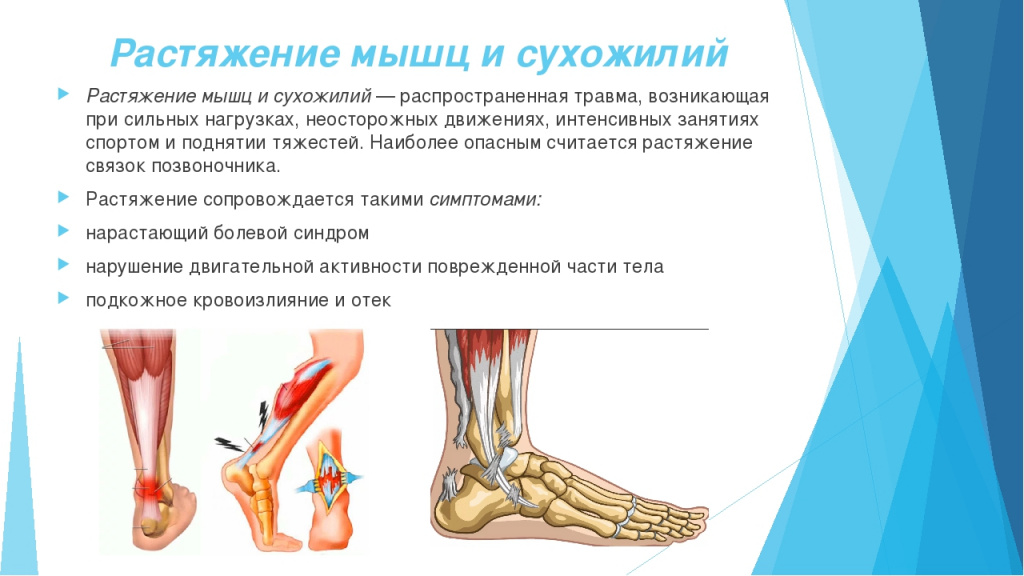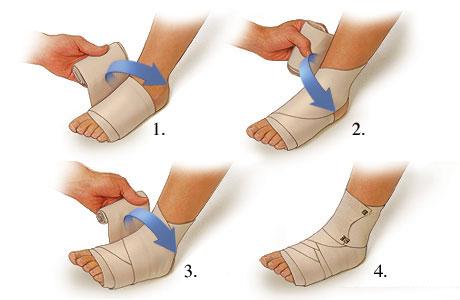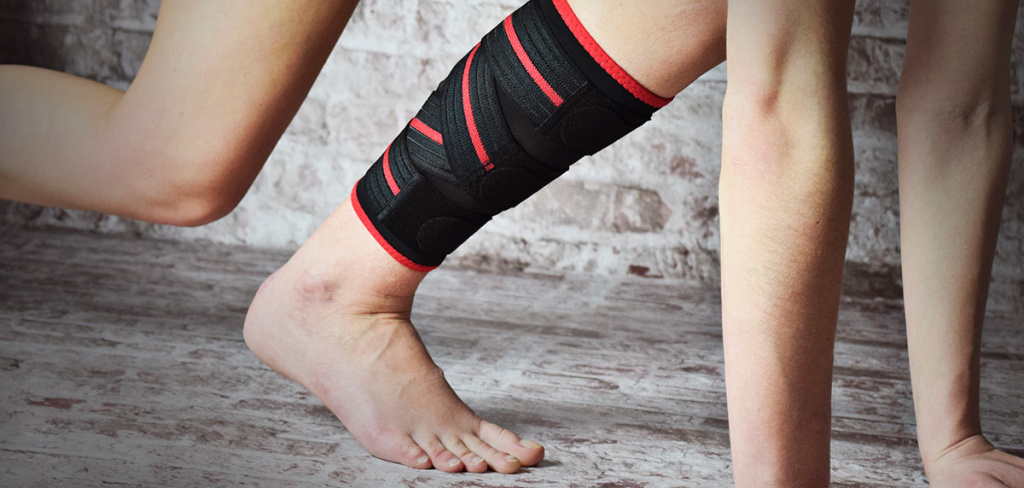This injury has well-known symptoms, the main of which are.

- Ligament sprain in a child
- First aid for sprains
- Treatment of sports injuries and sprains at the ArthroMedCentrum means:
- How do we treat a sprain? MBST therapy as an innovative treatment method
- Sore muscles – ointments, gels, painkillers
- How do I avoid overstretching my muscles?
- Treatment
- Prevention of sprains in children
- Prognosis of dislocated ligaments in a child
Ligament sprain in a child
Children are very mobile and emotional. It is difficult to keep them in one place and they are constantly moving, especially when running. This leads to frequent injuries, fractures and sprains. Children most commonly suffer knee and ankle ligament injuries. This type of injury cannot be assessed visually, so the child should be referred to a trauma surgeon or traumatologist.
If the ligaments are dislocated, the child will experience severe pain. This is because the ligaments that reinforce the joints have a large number of blood vessels and nerve fibers. Parents do not need to panic even if their child is crying and whining a lot. If the crying does not stop and the tissues swell, a doctor should be consulted. Children can suffer not only injuries to their limbs, but also hyperextension of the spine and sprain of the cervical spine. The following symptoms may occur:
If the lower leg ligament or foot is dislocated, the child cannot move due to severe pain. When the collar is sprained, children cannot move their head, have headaches and numbness in their fingers.
There will be immediate or gradual swelling at the site of the sprain.
A hematoma forms a few hours after the injury. A bruise may also form after 24 hours.
The bruised area is hot and the child feels uncomfortable.
With a complete rupture of the ligament, excessive mobility of the joint is observed; In the event of a sprain, the child tries not to step on the injured joint and to protect it.
First aid for sprains
If a dislocation is suspected, parents should ensure that the child rests. Something cold should be placed on the bruise. This can be an ice-filled hot water bottle wrapped in a towel. The cold cannot be maintained for more than 15 minutes. The joint can be loosely bandaged with an elastic bandage. As soon as the child has calmed down, a doctor should be consulted.


Treatment of sports injuries and sprains at the ArthroMedCentrum means:
- Qualified medical care from outstanding specialists;
- Innovative and effective treatment without surgery;
- No pain, injections or side effects;
- Use of original German devices;
- Long-lasting treatment effect;
- Eliminates the cause of the disease, not the symptoms;
- No inpatient treatment required;
- 100%iger recovery after the treatment.
'The ArthroMedCentrum strives to make treatment in the clinic not only pleasant but also affordable. That's why we systematically develop special offers and promotions for our customers.
How do we treat a sprain? MBST therapy as an innovative treatment method
MBST is a magnetic resonance therapy that is used in clinical practice in the form of several programs encoded on a chip card. These programs aim to rebuild cartilage in the spine, hips, knees, shoulders, feet and hands. They are mainly used to treat osteoarthritis, rheumatoid arthritis and sports injuries. The sprain treatment consists of 7 or 12 sessions, each lasting 1 hour per day. During this time, the patient lies on the device and 'absorbs' the energy without feeling any discomfort.
There are specific 3-day programs suitable for athletes after strenuous competitions and training sessions and to prevent cartilage damage. Magnetic resonance therapy uses the energy generated by our own hydrogen atoms during treatment. In a sense, the treatment of sports injuries is carried out using bioenergy, so its use does not entail any consequences for the body and no risk of developing complications. The treatment can be repeated without restrictions.
Sore muscles – ointments, gels, painkillers
Some experts recommend avoiding painkillers and anti-inflammatories in the first 48 hours after an injury. The argument is that they have a negative impact on healing tissue and increase the risk of bleeding. Paracetamol is recommended for the first two days after a muscle sprain, but only if necessary.
As soon as the acute condition has subsided, warming ointments, cooling ointments and Gels. Heparin. This prevents blood clots from forming and speeds recovery of the injured area. Horse chestnut preparations that improve the condition of the blood vessels can also be helpful. Tense muscles – Kinesio taping, massage, exercise.

Tense muscles – Kinesio taping, massage, exercises.
A strained tendon or muscle is a situation where it's worth it Kinesio taping – Relief of pain receptors, improvement of blood and lymph circulation improves metabolism the area where the straps are placed reduces bruising and provides passive support.
Massage, compression – are other measures that help heal the stretched muscle and reduce unpleasant discomfort. Through stroking, rubbing and the use of complementary gripsThese techniques come from classic massage and enable faster tissue regeneration. Of course, nothing can replace a professional massage by the hands of a therapist who can best judge which one The therapist is the best judge of which type of treatment will be most effective.
Exercise is another way to relax muscles. Rolling can work Foam rolling or simple stretching. So-called elevated positioning, ie positioning the injured limb above body height, is also very important. At least a few minutes a day, every day.
How do I avoid overstretching my muscles?
How long does a muscle strain hurt? The symptoms disappear within a few days.. However, sometimes the effects can last up to several weeks. It is very important to take appropriate measures to To prevent injuries of this type.. I'm talking about a balanced, protein-rich diet, which promotes collagen formation and can indirectly influence muscle strength. It is also important to be systematic to engage in physical activity systematically.Regular exercise improves the elasticity and strength of muscle fibers. This minimizes the risk of possible injuries.

It is also worth paying attention to appropriate footwear and other equipment needed for your chosen activity. For example, if you are hiking in the mountains You should equip yourself with trekking shoes that are longer than your ankle. This reduces the risk of possible injuries, such as muscle strains, sprains or dislocated ligaments.
Treatment
This type of injury requires long-term treatment. How long the injured tissue takes to heal depends on the severity of the rupture and the general condition of the body. The fibers of the ligaments have poor healing ability, which can lead to lengthy rehabilitation.
First aid for a sprained foot ligament is aimed at relieving pain and swelling. In the case of hemarthrosis, the fluid must be removed from the joint cavity. Further treatment allows foot function to be restored. This begins with immobilizing the joint. This step is especially important for injuries that involve broken bones.
A plaster cast is considered the most effective, but is not always possible in the first few minutes after the injury. Therefore, a homemade splint is used - a narrow board that is attached to the shinbone to support the knee and ankle joints. If there are no signs of a fracture, a tight bandage is applied to limit movement of the foot.

Cold compresses will prevent the swelling from spreading, and pain medications will help relieve the pain. For older injuries, heat can help the injured area heal. If you have sprained ligaments, you can use warming ointments from the pharmacy. Gels containing NSAIDs can also be applied topically. They have an anti-inflammatory and pain-relieving effect.
Mild sprains can be treated at home. Warming compresses and pain-relieving rubs are used for this. However, a visit to the doctor and an X-ray examination should not be avoided. Traditional treatment of foot sprains can be combined with folk remedies. The injured joint should be immobilized and kept warm. This accelerates the regeneration process of the connective tissue.
Prevention of sprains in children
Preventing sprains in children involves maintaining the highest level of safety during sports, games and all physical activities. If a child has already suffered a sprain, parents should pay attention to the age restrictions when playing sports. This applies to severe contortions. Regenerative and preventive exercises to strengthen the child's bones and joints are mandatory.
Diet should not be forgotten either. Your child's diet should contain plenty of fresh fruits and vegetables, meat and dairy products. A vitamin and mineral complex is also recommended to maintain normal calcium levels in the body.
Prognosis of dislocated ligaments in a child
The prognosis of dislocated ligaments in children depends on the type of injury and its location. If the injury is not treated promptly, it can lead to serious complications. For example, severe sprains can lead to tendon and muscle damage. Complete ligament tears can lead to fractures and broken bones, while simple sprains can lead to weakened joints. However, in most cases, the prognosis is favorable because children's bodies quickly recover from injuries if they are treated correctly.
Sprains in children occur at all ages. Playing, playing sports and various mechanical injuries can cause injury. However, with timely initial care and rehabilitation, the health of ligaments and joints can be completely restored and without consequences.
Read more:- Rupture of the ankle.
- How to distinguish a fracture from an ankle sprain.
- ankle sprain.
- ankle sprain.
- Ankle ligament sprain.
- How do you treat a sprained ankle?.
- Massage for flat feet.
- dislocation of the foot.
